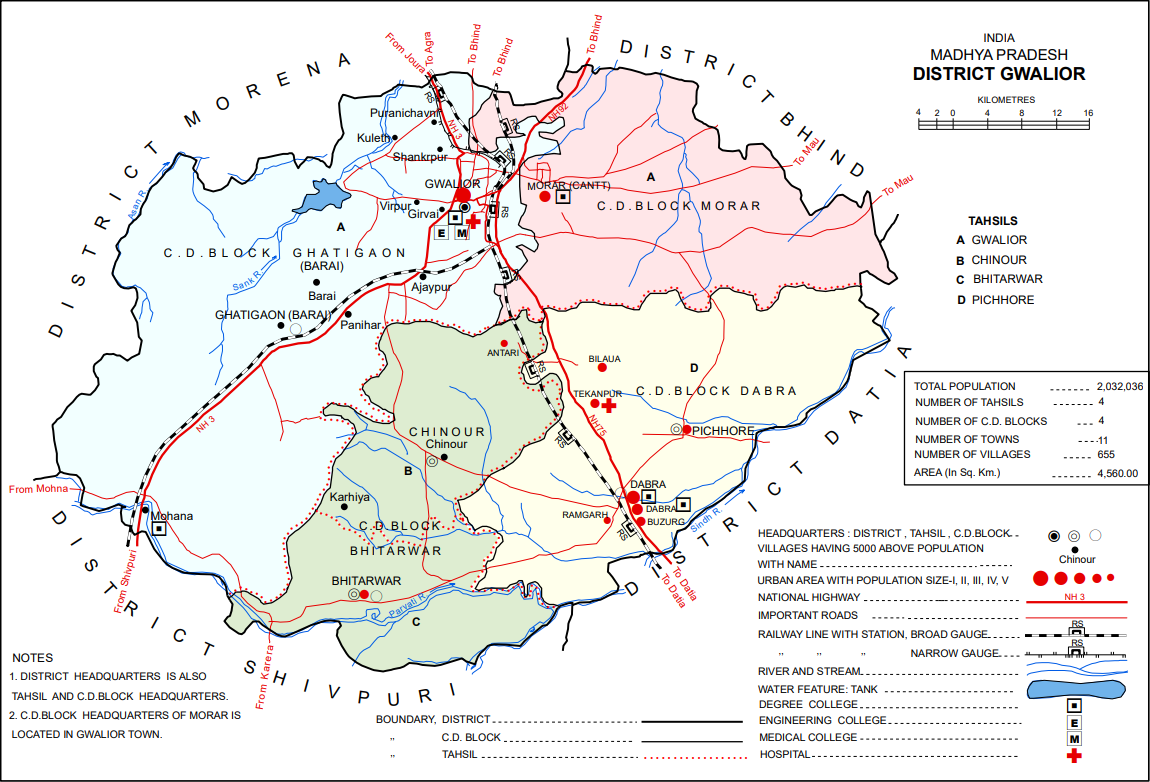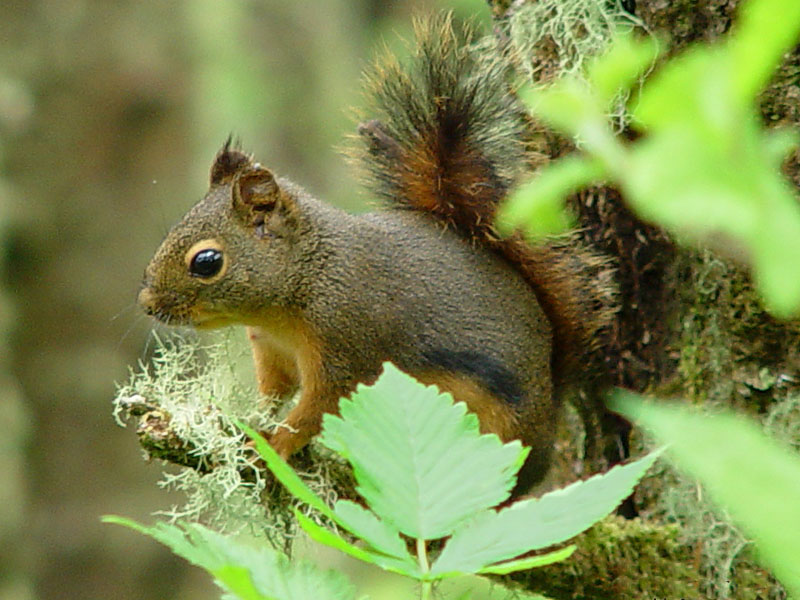|
Ghatigaon Sanctuary
Ghatigaon Wildlife Sanctuary is a wildlife sanctuary situated at Ghatigaon in India. Ghatigaon covers 511.0 km² in Madhya Pradesh state, west of the city of Gwalior. It extends to Tigra Dam, and includes part of the reservoir. It was established in 1981 to protect habitat of the great Indian bustard ''(Ardeotis nigriceps)''. It is home to many other birds, as well as blackbuck ''(Antilope cervicapra)'', chital ''(Axis axis)'', wild boar, and striped hyena ''(Hyaena hyaena)''. The sanctuary in the Khathiar-Gir dry deciduous forests ecoregion. The predominant vegetation is low shrubland and woodland. The predominant tree species is khair (''Senegalia catechu''), with tendu (''Diospyros melanoxylon''), reonjha (''Vachellia leucophloea''), and others. Shrubland species include ''Zizyphus'' spp. and the grasses '' Eragrostis tenella, Aristida hystrix'', and ''Apluda mutica ''Apluda'' is a genus of plants in the grass family native to Asia and to various islands in the Indian ... [...More Info...] [...Related Items...] OR: [Wikipedia] [Google] [Baidu] |
Wildlife Sanctuaries Of India
A wildlife sanctuary in India is a protected area of importance for flora, fauna, or features of geological or other interest, which is reserved and managed for conservation and to provide opportunities for study or research. The Wild Life (Protection) Act, 1972 provides for the establishment of protected areas in India. Wildlife sanctuaries of India, are classified as IUCN Category IV protected areas. 573 wildlife sanctuaries have been established, covering . Among these, Project Tiger governs 53 tiger reserves, which are of special significance for the conservation of the Bengal tiger. Additionally, there are 33 elephant reserves covering established under the Project Elephant, some of which overlap with the boundaries of declared wildlife sanctuaries and tiger reserves. Established in 1936, Vedanthangal Bird Sanctuary in Tamil Nadu was the first bird sanctuary in the country and the Mudumalai Wildlife Sanctuary was established later in 1940. Spanning , Kutch Desert ... [...More Info...] [...Related Items...] OR: [Wikipedia] [Google] [Baidu] |
Senegalia Catechu
''Senegalia catechu'', previously known as ''Acacia catechu'', is a deciduous, thorny tree which grows up to in height. The plant is called ''kachu'' in Malay; the Malay name was Latinized to "catechu" in Linnaean taxonomy, as the species from which the extracts cutch and catechu are derived. Other common names for it include kher, catechu, cachou, cutchtree, black cutch, and black catechu. ''Senegalia catechu'' is native to South Asia and Southeast Asia, including the Indian subcontinent, Myanmar, Cambodia and China (Yunnan). Through derivatives of the flavanols in its extracts, the species has lent its name to the important catechins, catechols and catecholamines of chemistry and biology. Uses Food The tree's seeds are a good source of protein. Kattha ( catechu), an extract of its heartwood, gives a characteristic flavor and red color to paan, a traditional Indian and Southeast Asian method for chewing betel leaf (''Piper betle'') with areca nut and slaked lime paste. F ... [...More Info...] [...Related Items...] OR: [Wikipedia] [Google] [Baidu] |
Gwalior District
Gwalior district () is one of the 52 districts of Madhya Pradesh state in central India. The historic city of Gwalior is its administrative headquarters. Other cities and towns in this district are Antari, Bhitarwar, Bilaua, Dabra, Morar Cantonment, Pichhore, and Tekanpur. The district is at the centre of the Gird region. The district has an area of 4,560 km2, and a population 2,032,036 (2011 census), a 25% increase from the 2001 census. Kaushlendra Vikram Singh has been the district collector since March 2020. Geography Located in a transitional zone between the Malwa plateau and the Gangetic plain in Upper (Northern) Madhya Pradesh, Gwalior district consists of several distinct geographical areas. North and east of Gwalior city there is a broad alluvial plain, mostly flat and covered in dumat, parua, and kabar soils. The central part of the district, around Gwalior, is somewhat hilly, with sandstone outcrops that have often served as a source for building mater ... [...More Info...] [...Related Items...] OR: [Wikipedia] [Google] [Baidu] |
Wildlife Sanctuaries In Madhya Pradesh
Wildlife refers to undomesticated animals and uncultivated plant species which can exist in their natural habitat, but has come to include all organisms that grow or live wild in an area without being introduced by humans. Wildlife was also synonymous to game: those birds and mammals that were hunted for sport. Wildlife can be found in all ecosystems. Deserts, plains, grasslands, woodlands, forests, and other areas including the most developed urban areas, all have distinct forms of wildlife. While the term in popular culture usually refers to animals that are untouched by human factors, most scientists agree that much wildlife is affected by human activities. Some wildlife threaten human safety, health, property and quality of life. However, many wild animals, even the dangerous ones, have value to human beings. This value might be economic, educational, or emotional in nature. Humans have historically tended to separate civilization from wildlife in a number of ways, incl ... [...More Info...] [...Related Items...] OR: [Wikipedia] [Google] [Baidu] |
Apluda Mutica
''Apluda'' is a genus of plants in the grass family native to Asia and to various islands in the Indian and Pacific Oceans. The only known species is ''Apluda mutica'', native to Central Asia, China (incl. Taiwan + Tibet), Japan (incl Ryukyu Islands), Indian Subcontinent, Southeast Asia, New Guinea, Vanuatu, Solomon Islands, New Caledonia, Caroline Islands, Madagascar, Mauritius, Réunion, Socotra, Oman. ;Formerly included see ''Andropogon, Ichnanthus, Ischaemum, Polytoca, Themeda, Zeugites'' See also * List of Poaceae genera Poaceae, also known as the true grasses, is the fourth largest plant family in the world with around 12,000 species and roughly 800 genera. They contain, among others, the cereal crop species and other plants of economic importance, such as the b ... References External links Grassbase - The World Online Grass Flora* * Andropogoneae Bunchgrasses of Asia Bunchgrasses of Oceania Poaceae genera Monotypic Poaceae genera Taxa named by Ca ... [...More Info...] [...Related Items...] OR: [Wikipedia] [Google] [Baidu] |
Aristida Hystrix
''Aristida'' is a very nearly cosmopolitan genus of plants in the grass family. ''Aristida'' is distinguished by having three awns (bristles) on each lemma of each floret. The genus includes about 300 species found worldwide, often in arid warm regions. This genus is among those colloquially called three-awns wiregrasses, speargrasses and needlegrasses. The name ''Aristida'' is derived from the Latin " arista", meaning "awn". They are characteristic of semiarid grassland. The Wiregrass Region of North America is named for '' A. stricta''. Other locales where this genus is an important component of the ecosystem include the Carolina Bays, the sandhills of the Carolinas, and elsewhere, Mulga scrub in Australia, and the xeric grasslands around Lake Turkana in Africa. Local increases in the abundance of wiregrasses is a good indicator of overgrazing, as livestock avoid them. Description ''Aristida'' stems are ascending to erect, with both basal and cauline leaves. The leave ... [...More Info...] [...Related Items...] OR: [Wikipedia] [Google] [Baidu] |
Eragrostis Tenella
''Eragrostis amabilis'' is a bunchgrass, in the subfamily Chloridoideae of Poaceae, native to Africa and southern Asia. Synonymy includes: ''Eragrostis tenella'' Benth., ''Eragrostis elegans'' Nees, and ''Eragrostis interrupta'' Lam. Döll. Uses ''Eragrostis amabilis'' is grown as a drought tolerant ornamental grass in garden A garden is a planned space, usually outdoors, set aside for the cultivation, display, and enjoyment of plants and other forms of nature. The single feature identifying even the wildest wild garden is ''control''. The garden can incorporate bot ...s. References * External links Flora brasilensis: ''Eragrostis interrupta'' Bunchgrasses of Africa Flora of temperate Asia Flora of tropical Asia Bunchgrasses of Asia Garden plants of Asia Garden plants of Africa amabilis {{Chloridoideae-stub ... [...More Info...] [...Related Items...] OR: [Wikipedia] [Google] [Baidu] |
Zizyphus
''Ziziphus'' is a genus of spiny shrubs and small trees in the buckthorn family, Rhamnaceae. It includes 68 species native to tropical and subtropical Africa, Eurasia, and Australia and tropical South America. The leaves are alternate, entire, with three prominent basal veins, and often aromatic. The flowers are small, inconspicuous yellow-green. The fruit is an edible drupe, often very sweet and sugary, reminiscent of a date in texture and flavour. Well known species include the commonly cultivated ''Ziziphus jujuba'' ( jujube), '' Ziziphus spina-christi'' from southwestern Asia, ''Ziziphus lotus'' from the Mediterranean region, and ber ('' Ziziphus mauritiana''), which is found from western Africa to India. Etymology The generic name is derived via classical Latin from Hellenistic Greek, where it is presumed to have been borrowed from another language, perhaps from ''zizfum'' or ''zizafun'', the Persian word for '' Z. lotus''. Ecology ''Ziziphus'' species are used as foo ... [...More Info...] [...Related Items...] OR: [Wikipedia] [Google] [Baidu] |
Vachellia Leucophloea
''Vachellia leucophloea'' (), also vernacularly as the ''White Bark Acacia'' or ''reonja'', is a moderate-sized tree native to South and Southeast Asia. Distribution ''Vachellia leucophloea'' grows natively in India, Nepal, Pakistan, Sri Lanka, Myanmar, Thailand, Vietnam, and Indonesia. Medicinal uses The bark extracts of ''Vachellia leucophloea'' are used in Pakistani traditional medicine as an astringent, a bitter, a thermogenic, a styptic, a preventive of infections, an anthelmintic, a vulnerary, a demulcent, an expectorant, an antipyretic, an antidote for snake bites and in the treatment of bronchitis, cough, vomiting, wounds, ulcers, diarrhea, dysentery, internal and external hemorrhages, dental caries, stomatitis, and intermittent fevers and skin diseases.Imran Imran, Liaqat Hussain, M. Zia-Ul-Haq, Khalid Hussain Janbaz, Anwar H. Gilani, Vincenzo De Feo, "Gastrointestial and respiratory activities of ''Acacia leucophloea.''" ''Journal of Ethnopharmacology The ''Journal of ... [...More Info...] [...Related Items...] OR: [Wikipedia] [Google] [Baidu] |
Diospyros Melanoxylon
''Diospyros melanoxylon'', the Coromandel ebony or East Indian ebony, is a species of flowering tree in the family Ebenaceae native to India and Sri Lanka; it has a hard, dry bark. Its common name derives from Coromandel, the coast of southeastern India. Locally it is known as ''temburini'' or by its Hindi name ''tendu''. In Odisha, Jharkhand, and Assam, it is known as ''kendu''. In Andhra Pradesh, and Telangana it is known as ''tuniki''. The leaves can be wrapped around tobacco to create the Indian '' beedi'', which has outsold conventional cigarettes in India. The olive-green fruit of the tree is edible. Pharmacology The leaf of the tree contains valuable flavones. The pentacyclic triterpenes found in the leaves possess antimicrobial properties, while the bark shows antihyperglycemic activity. The bark of four ''Diospyros'' species found in India has been determined to have significant antiplasmodial effects against ''Plasmodium falciparum'', which causes malaria i ... [...More Info...] [...Related Items...] OR: [Wikipedia] [Google] [Baidu] |
Ghatigaon
Ghatigaon (''Gháṭígaon'') is a village and corresponding community development block in Gwalior district of Madhya Pradesh, India. As of 2011, the village population was 5,641, in 1,088 households. History Ghatigaon is mentioned in the 1908 British gazetteer as a village of Gwalior State, in pargana Mastura of zila Gird Gwalior, with an area of 10,703 bighas and a population of 679. It had a camping ground, a Dak bungalow, an excise shop, metalled road access, a state post office, a railway station Rail transport (also known as train transport) is a means of transport using wheeled vehicles running in railway track, tracks, which usually consist of two parallel steel railway track, rails. Rail transport is one of the two primary means of ..., and a sayar naka. Villages Ghatigaon CD block has the following 159 villages: References {{Reflist Villages in Gwalior district ... [...More Info...] [...Related Items...] OR: [Wikipedia] [Google] [Baidu] |



